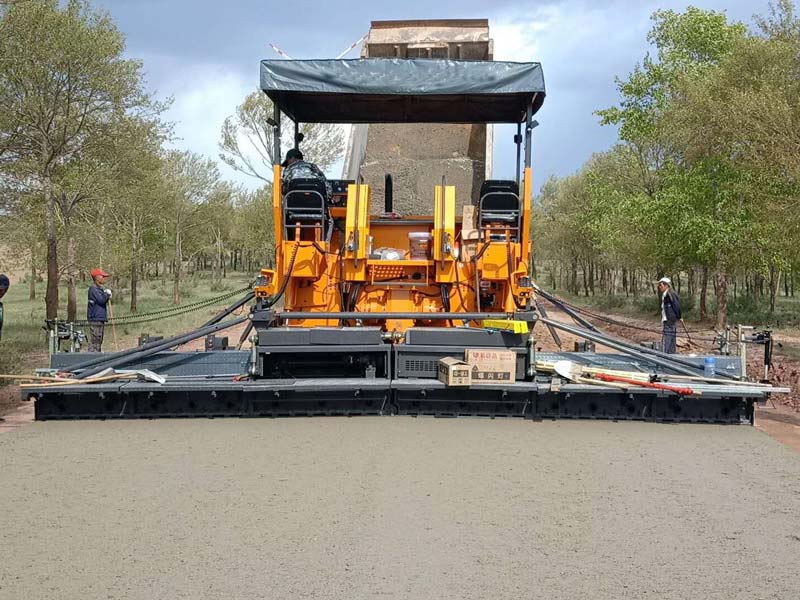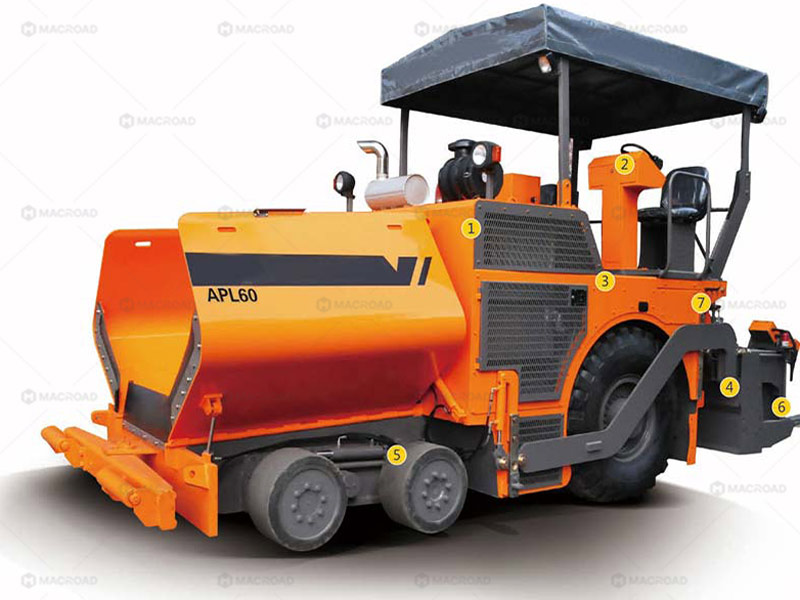14
0
0
Coordinating Flexibility and Accuracy in Asphalt Road Paving
In asphalt road paving, particularly through complex terrains such as sharp mountain bends and narrow urban commercial sections, achieving a balance between operational flexibility and linear accuracy is crucial. This challenge is especially pronounced in small-radius curve paving, where the steering sensitivity of pavers must be finely tuned to match the volume of mixture delivery. This article explores the unique challenges that arise in these scenarios and how they can be resolved through precise adjustments in equipment operating parameters.

Challenges in Small-Radius Curve Paving
Paving in small-radius curves presents several unique challenges that can affect both the quality of the asphalt layer and the overall efficiency of the paving operation. One of the primary concerns is the need for the paver to adjust its steering sensitivity to navigate the tight radius while ensuring that the asphalt mixture is delivered evenly.
As the paver turns, the dynamics of mixture flow can change significantly. If the steering is too sensitive, it may lead to uneven paving thickness, while insufficient sensitivity may cause the paver to miss the intended path, resulting in misaligned edges. Thus, achieving the right balance is essential for maintaining the integrity of the pavement, especially at the junctions with curbs or existing roadways.
Additionally, the volume of asphalt mixture delivered to the paver must be carefully coordinated with its steering movements. In tight curves, the mixture often needs to be distributed more selectively, as the turning radius can lead to variations in how the asphalt settles. This requires a sophisticated level of control over both the paver's movement and the mixture's flow.

Fine Adjustments of Equipment Parameters
To address these challenges, operators must make fine adjustments to the equipment's operating parameters. One effective method is to adjust the unilateral track speed difference of the paver. By varying the speed of the tracks on one side of the paver, operators can influence its turning radius, allowing for smoother navigation around curves without compromising the integrity of the asphalt being laid.
Another critical adjustment involves the auger conveyor speed. By fine-tuning the speed at which the mixture is delivered to the paver, operators can ensure that the asphalt is spread evenly, even in tight spaces. This adjustment is particularly important in small-radius curves where the mixture may need to be distributed more carefully to avoid segregation or uneven thickness.
These adjustments require constant monitoring and responsiveness from the crew. Operators must be trained to recognize the signs of potential issues, such as changes in the mixture’s consistency or the paver's handling characteristics. By staying attuned to these factors, they can make quick adjustments to maintain the desired paving quality.

Ensuring Smooth Connections with Edges
A critical aspect of successful asphalt road paving in complex terrains is ensuring a smooth connection between the paving edge and adjacent features, such as curbs or existing pavements. The accuracy of these connections is vital for both aesthetic and functional purposes. Any misalignment can lead to drainage issues or surface irregularities that may compromise the road's longevity.
To facilitate smooth connections, operators must carefully monitor the transition points during paving. This involves synchronizing the paver’s movements with the delivery of the asphalt mixture to ensure that the edges are laid down continuously and without gaps. Effective communication between the paver operator and the crew responsible for monitoring the paving edge is essential for achieving this goal.
Additionally, the use of advanced paving technologies, such as 3D paving control systems, can enhance precision in these situations. These systems provide real-time feedback on the paver's position and the thickness of the asphalt being laid, allowing for immediate adjustments based on actual conditions.
In conclusion, coordinating operational flexibility with linear accuracy in asphalt road paving through complex terrains requires a nuanced approach. By addressing the challenges presented by small-radius curves and making fine adjustments to equipment parameters, paving crews can ensure high-quality results. Maintaining smooth connections between paving edges and existing structures further enhances the integrity and performance of the finished road, making it essential for successful asphalt road construction in challenging environments.

Challenges in Small-Radius Curve Paving
Paving in small-radius curves presents several unique challenges that can affect both the quality of the asphalt layer and the overall efficiency of the paving operation. One of the primary concerns is the need for the paver to adjust its steering sensitivity to navigate the tight radius while ensuring that the asphalt mixture is delivered evenly.
As the paver turns, the dynamics of mixture flow can change significantly. If the steering is too sensitive, it may lead to uneven paving thickness, while insufficient sensitivity may cause the paver to miss the intended path, resulting in misaligned edges. Thus, achieving the right balance is essential for maintaining the integrity of the pavement, especially at the junctions with curbs or existing roadways.
Additionally, the volume of asphalt mixture delivered to the paver must be carefully coordinated with its steering movements. In tight curves, the mixture often needs to be distributed more selectively, as the turning radius can lead to variations in how the asphalt settles. This requires a sophisticated level of control over both the paver's movement and the mixture's flow.

Fine Adjustments of Equipment Parameters
To address these challenges, operators must make fine adjustments to the equipment's operating parameters. One effective method is to adjust the unilateral track speed difference of the paver. By varying the speed of the tracks on one side of the paver, operators can influence its turning radius, allowing for smoother navigation around curves without compromising the integrity of the asphalt being laid.
Another critical adjustment involves the auger conveyor speed. By fine-tuning the speed at which the mixture is delivered to the paver, operators can ensure that the asphalt is spread evenly, even in tight spaces. This adjustment is particularly important in small-radius curves where the mixture may need to be distributed more carefully to avoid segregation or uneven thickness.
These adjustments require constant monitoring and responsiveness from the crew. Operators must be trained to recognize the signs of potential issues, such as changes in the mixture’s consistency or the paver's handling characteristics. By staying attuned to these factors, they can make quick adjustments to maintain the desired paving quality.

Ensuring Smooth Connections with Edges
A critical aspect of successful asphalt road paving in complex terrains is ensuring a smooth connection between the paving edge and adjacent features, such as curbs or existing pavements. The accuracy of these connections is vital for both aesthetic and functional purposes. Any misalignment can lead to drainage issues or surface irregularities that may compromise the road's longevity.
To facilitate smooth connections, operators must carefully monitor the transition points during paving. This involves synchronizing the paver’s movements with the delivery of the asphalt mixture to ensure that the edges are laid down continuously and without gaps. Effective communication between the paver operator and the crew responsible for monitoring the paving edge is essential for achieving this goal.
Additionally, the use of advanced paving technologies, such as 3D paving control systems, can enhance precision in these situations. These systems provide real-time feedback on the paver's position and the thickness of the asphalt being laid, allowing for immediate adjustments based on actual conditions.
In conclusion, coordinating operational flexibility with linear accuracy in asphalt road paving through complex terrains requires a nuanced approach. By addressing the challenges presented by small-radius curves and making fine adjustments to equipment parameters, paving crews can ensure high-quality results. Maintaining smooth connections between paving edges and existing structures further enhances the integrity and performance of the finished road, making it essential for successful asphalt road construction in challenging environments.
Signatur